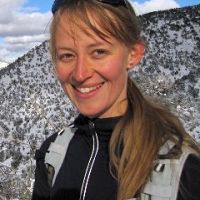Stielstra, 2012
Quantifying the role of hydrologic variability in soil carbon flux
Stielstra C.M (2012)
MS Thesis in Hydrology and Water Resources. University of Arizona, Tucson, Arizona
-
Catalina-Jemez, GRAD STUDENT
Abstract
Soil carbon is the largest terrestrial carbon pool. While inputs to the soil carbon system are well constrained, the diverse factors that contribute to soil C efflux remain poorly understood. The O/A horizon, typically rich in organic matter, experiences extremes in wetting and drying, and previous studies have shown that soil carbon dynamics are critically linked to moisture availability. Carbon in surface soils is mobilized via two distinct pathways: CO2 efflux and leaching of dissolved organic carbon (DOC). The goal of this study is to quantify the role of hydrologic variability in mobilizing carbon as gaseous and dissolved fluxes from near-surface soils, and to determine the relative magnitudes of dissolved and gaseous fluxes. Samples were collected through 2010 and 2011 from subalpine sites in Southern Arizona and Northern New Mexico. Both of these sites are characterized by bimodal precipitation and soil moisture seasons- spring snowmelt and summer monsoon. However, sites in NM experience a snow-covered season of variable duration, while sites in AZ experience ephemeral snow cover. We observed no significant variability in DOC leachate, and these values were low at all sites; however in contrast, CO2 fluxes were large (from 0.22gCm-2d-1 to 5.27gCm-2d-1) and varied between sites and between years. Soil moisture is the primary control on CO2 efflux at these sites, both during the winter and during the growing season. Our results suggest that in arid montane forests both soil carbon dynamics and ecosystem carbon balance are critically linked to water availability.
Citation
Stielstra C.M (2012): Quantifying the role of hydrologic variability in soil carbon flux. MS Thesis in Hydrology and Water Resources. University of Arizona, Tucson, Arizona.
 This Paper/Book acknowledges NSF CZO grant support.
This Paper/Book acknowledges NSF CZO grant support.
Explore Further

